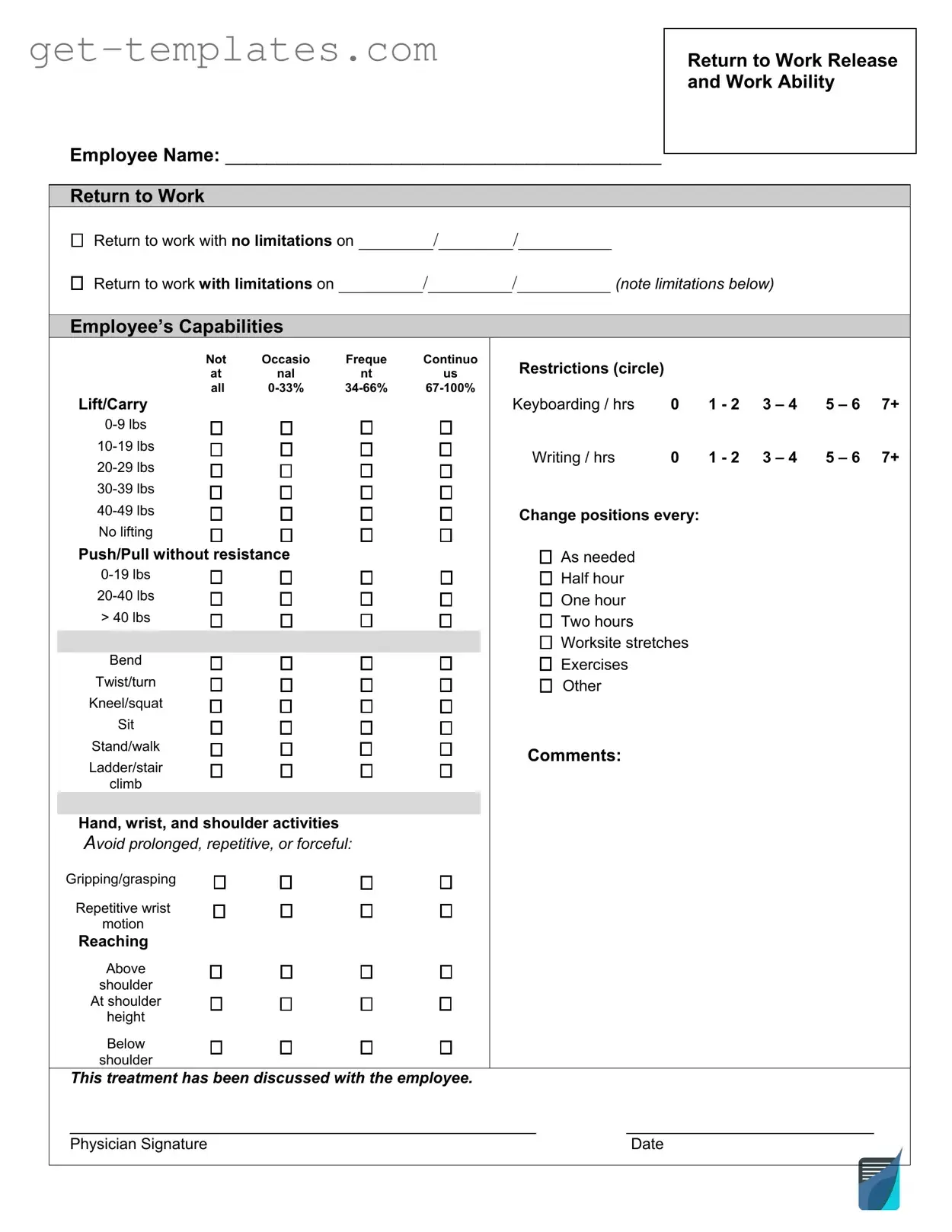A Work Release form is a document that allows individuals to leave a correctional facility temporarily for employment purposes. This form is typically used by inmates who have been granted permission to work while serving their sentence, enabling them to gain skills and earn income.
Eligibility for a Work Release form generally depends on several factors, including the nature of the offense, behavior while incarcerated, and the policies of the correctional facility. Typically, inmates who demonstrate good behavior and have a stable job offer may qualify.
How do I apply for a Work Release?
To apply for a Work Release, inmates should follow these steps:
-
Obtain the Work Release application form from the facility's administration.
-
Complete the form with accurate information regarding employment and personal details.
-
Submit the form to the designated authority within the facility for review.
-
Await approval, which may involve a hearing or interview process.
The Work Release form typically requires the following information:
-
Inmate's full name and identification number
-
Details of the job offer, including the employer's name and contact information
-
Work schedule and hours
-
Signature of the employer confirming the job offer
-
Any special accommodations needed for the inmate
What are the benefits of participating in a Work Release program?
Participating in a Work Release program offers several advantages:
-
Opportunity to gain work experience and skills that enhance employability.
-
Ability to earn wages, which can help support families or pay restitution.
-
Improved chances of successful reintegration into society upon release.
Are there any restrictions while on Work Release?
Yes, individuals on Work Release must adhere to specific restrictions, which may include:
-
Limited travel outside of designated work hours.
-
Regular check-ins with facility staff.
-
Prohibition on engaging in illegal activities or associating with certain individuals.
Can a Work Release be revoked?
Yes, a Work Release can be revoked if the individual violates any terms of the program. Common reasons for revocation include failure to report back to the facility on time, engaging in criminal behavior, or not complying with work-related requirements.
How long can I participate in a Work Release program?
The duration of participation in a Work Release program varies by facility and individual circumstances. Typically, it lasts as long as the inmate remains compliant with the program's requirements and maintains good behavior. Regular reviews may occur to assess continued eligibility.
What happens after completing a Work Release program?
After completing a Work Release program, individuals may receive support for transitioning back into society. This support can include job placement services, counseling, and assistance with housing. Successful completion can also positively influence parole decisions and future employment opportunities.

